Within the Mathematics Department at St Bede’s, our intention is for our students to:
-
develop their understanding of mathematics and determination so they can succeed within a creative and supportive Catholic environment, by encouraging students to have faith in their God given abilities and to promote excellence in the pursuit of maximizing their potential,
-
be equipped with strong number, algebra and geometry skills to enable them to perform written and mental calculations accurately and efficiently, building upon students’ knowledge gained at each key stage to increase fluency and deepen understanding of mathematics,
-
to use and apply mathematical techniques to model and solve problems in pure and applied mathematics and to investigate and explain real-life phenomena,
-
develop the language skills to articulate and present their mathematical thoughts in clear and logically valid way,
-
be provided with the terminology, mathematics specific and otherwise, to effectively interpret and respond to mathematical questioning, applying their reasoning skills throughout,
-
experience inclusive education by planning and delivering lessons which consider the specific needs of SEND and disadvantaged students,
-
be empowered to use and apply mathematics to critically evaluate statements of fact and opinion,
-
encounter the promotion of tolerance and understanding in classroom discussions and through teaching respect for the opinions of others,
-
be provided with an historical and cultural understanding of mathematics to develop their appreciation and respect for other cultures,
-
develop their awareness of how mathematics relates to the wider world and equip them with the cultural capital to excel at any career.
Number and Ratio
At Key Stage 2, students will have gained a sound understanding of the number system working with integers, fractions and decimals; they will have worked with percentages and ratio and investigated number patterns. In Years 7 and 8, students will develop strong mental arithmetic skills; extend their knowledge of fractions, decimals and percentages; understand how to estimate and round answers. As students move into Year 9, they will work with indices and standard form and begin to use and investigate surds and irrational numbers. As they progress into Years 10 and 11, they will investigate how ratio and proportion can be used to solve problems and model problems involving growth and decay. As students move into Sixth Form, they will work with logarithmic and exponential functions and apply their number skills to model real-life situations.
Algebra
At Key Stage 2, students will have gained a basic knowledge of algebraic terminology, dealing with formulae and solving basic linear equations. In Years 7 and 8 students will become fluent in algebraic manipulation; expanding brackets and factorizing expressions; they will solve linear equations and use algebraic formulae. As students move into Year 9 they will investigate quadratic expressions and equations and non-linear graphs; they will use and apply more complex co-ordinate geometry and investigate types of number sequences. As they progress into Years 10 and 11, students learn how to solve equations graphically, investigate composite functions and iterations and work with algebraic fractions; they will learn how to form mathematical proofs. As students move into Sixth Form, they will extend their knowledge of co-ordinate geometry and use calculus to differentiate and integrate functions; they will investigate mappings and functions and learn how to form and solve differential equations; they will use binomial expansions to investigate functions.
Geometry
At Key Stage 2, students will have gained a sound knowledge of the properties of shapes and the perimeter and area of rectilinear shapes. In Years 7 and 8, students will investigate the properties of angles and the geometry of triangles and quadrilaterals; they will extend their knowledge of the perimeter, area and volume of shapes. Students will use and apply Pythagoras’ theorem and be introduced to trigonometry. In Year 9, students will use and apply trigonometry; find the circumference and area of circles; use bearings and carry out constructions using a rules and compasses. As they progress into Years 10 and 11, students will investigate circle geometry, use and apply the sine and cosine rules and solve 3-D problems using Pythagoras and trigonometry; they will use and apply vector geometry. As students move into Sixth Form, they will extend their knowledge of trigonometry by investigating trig identities and solving trig equations; they will study mechanics to investigate forces and the laws of motion.
Statistics
At Key Stage 2, students will have gained a sound knowledge of constructing and interpreting tables and charts and be familiar with measures of average and commenting on data sets. In Years 7 and 8, students will extend their knowledge of graphs, tables and charts; they will learn how to apply their knowledge of averages and the range to analyze data sets and calculate the probability of events. In Year 9, students will represent and interpret data using pie-charts and time-series graphs; they will compare data sets and investigate misleading data. As they progress into Years 10 and 11, students will investigate conditional probability; use Venn diagrams and tree diagrams to solve probability problems; represent and interpret data using cumulative frequency diagrams, box-plots and histograms. As students move into Sixth Form, they will investigate correlation and regression; use measures of location and dispersion to compare data sets; investigate probability distributions and use probability to test hypotheses.


